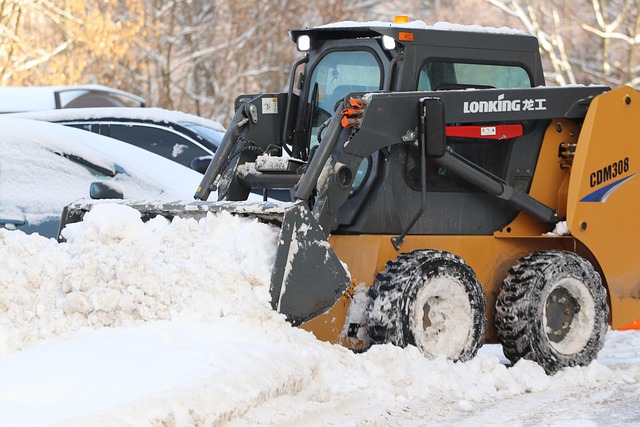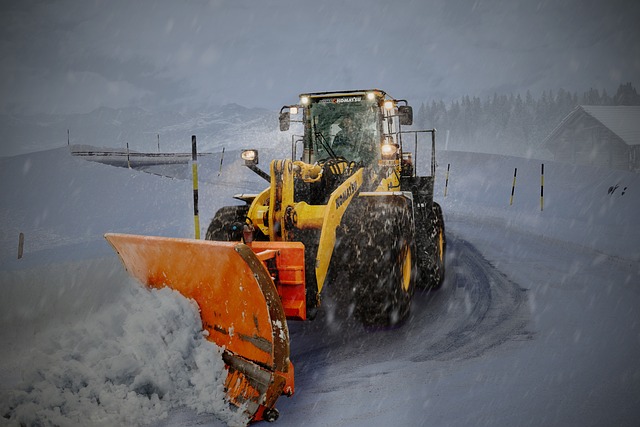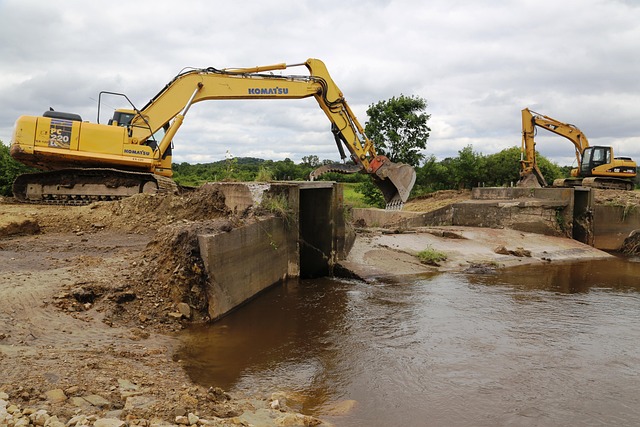When hiring a commercial snow removal service, review contracts thoroughly for clear definitions of responsibilities, response times to severe weather, equipment maintenance, and payment terms. Define scope of work, exclusions, weather conditions, and response strategies. Include strict maintenance and equipment replacement provisions. Secure fair rates, payment terms, and regular reviews for transparency and efficient service throughout the winter season.
Ensuring a seamless and safe winter with a reliable commercial snow removal service is paramount for business owners. However, navigating contracts can be a snowy landscape of potential pitfalls. This guide navigates essential aspects to avoid these traps, offering strategies to mitigate risks and optimize your agreement. From understanding intricate obligations to establishing transparent pricing and maintenance protocols, each step ensures a robust contract that prioritizes both quality service delivery and fair business practices.
- Understand Contractual Obligations and Responsibilities
- Define Clear Service Scope and Exclusions
- Specify Weather Conditions and Response Times
- Include Provisions for Equipment Maintenance and Replacement
- Establish Transparent Pricing and Payment Terms
Understand Contractual Obligations and Responsibilities

When hiring a commercial snow removal service, it’s crucial to thoroughly understand the contract before signing. This agreement outlines the responsibilities of both parties—the service provider and your business. Key obligations include specific snow clearing tasks, response times in case of severe weather, and maintenance of equipment. Ensure these meet your establishment’s needs.
Additionally, contracts should address safety measures, insurance coverage for property damage or injuries, and payment terms. Clear definitions of these aspects will help avoid misunderstandings later on. By reviewing these key points, you can better navigate potential pitfalls, ensuring a reliable and efficient snow removal process throughout the winter season.
Define Clear Service Scope and Exclusions

When entering into a contract for commercial snow removal services, defining the scope of work and exclusions is paramount to prevent misunderstandings and disputes. A clear service scope outlines what the contractor will do, including specific tasks like salting, plowing, and snow piling. It should also detail responsible areas, such as parking lots, entrances, and walkways. Exclusions, on the other hand, specify what’s not included in the contract, such as de-icing or salt application inside buildings or on roofs (unless explicitly agreed upon).
This transparency allows both parties to align expectations, ensuring the contractor provides the services contracted for and the client understands what they’re paying for. Clearly defining these boundaries from the outset fosters trust and promotes a harmonious working relationship throughout the season.
Specify Weather Conditions and Response Times

When drafting a contract for a commercial snow removal service, it’s crucial to outline specific weather conditions and response times. This clarity ensures both parties are on the same page regarding expectations and responsibilities. Define typical winter storms and their associated snowfall amounts; for instance, specify that the service includes clearing 5 inches or more of new snow within 4 hours of a storm ending.
Also, address unusual weather events like ice storms or blizzards. These situations may require different response strategies than regular snowfall. Clearly stipulate adjusted response times and procedures to manage such events effectively. This detail helps prevent misunderstandings and guarantees prompt, efficient clearing, keeping your business operations running smoothly during winter.
Include Provisions for Equipment Maintenance and Replacement

When drafting a contract for a commercial snow removal service, it’s crucial to include provisions that ensure the reliability and efficiency of the equipment. This includes stipulating clear maintenance schedules and protocols, detailing the responsibilities of both parties in keeping the machinery in good working order. Regular maintenance checks should be outlined, specifying the frequency and types of services required to keep plows, salt spreaders, and other equipment in top condition.
Additionally, the contract must address equipment replacement. It should outline the process for replacing worn-out or damaged machinery, including timelines and costs. This ensures that the commercial snow removal service is held accountable for providing up-to-date equipment, which directly impacts the quality of their work and safety during snowstorms.
Establish Transparent Pricing and Payment Terms

When negotiating a contract with a commercial snow removal service, clear and transparent pricing is paramount. Make sure the agreement outlines specific rates for different services, such as plowing, salting, and snow melting. Ask for a detailed breakdown of costs based on factors like snow depth, area to be cleared, and frequency of removal. This transparency ensures you understand exactly what you’re paying for and helps set clear expectations.
Payment terms should also be clearly stated. Discuss the schedule for invoicing and payments, including any late fees or discounts for prompt payment. Establish a system that aligns with your business’s financial processes to streamline accounting and avoid misunderstandings. Regularly reviewing these terms throughout the season is crucial to guarantee both parties remain on the same page.




